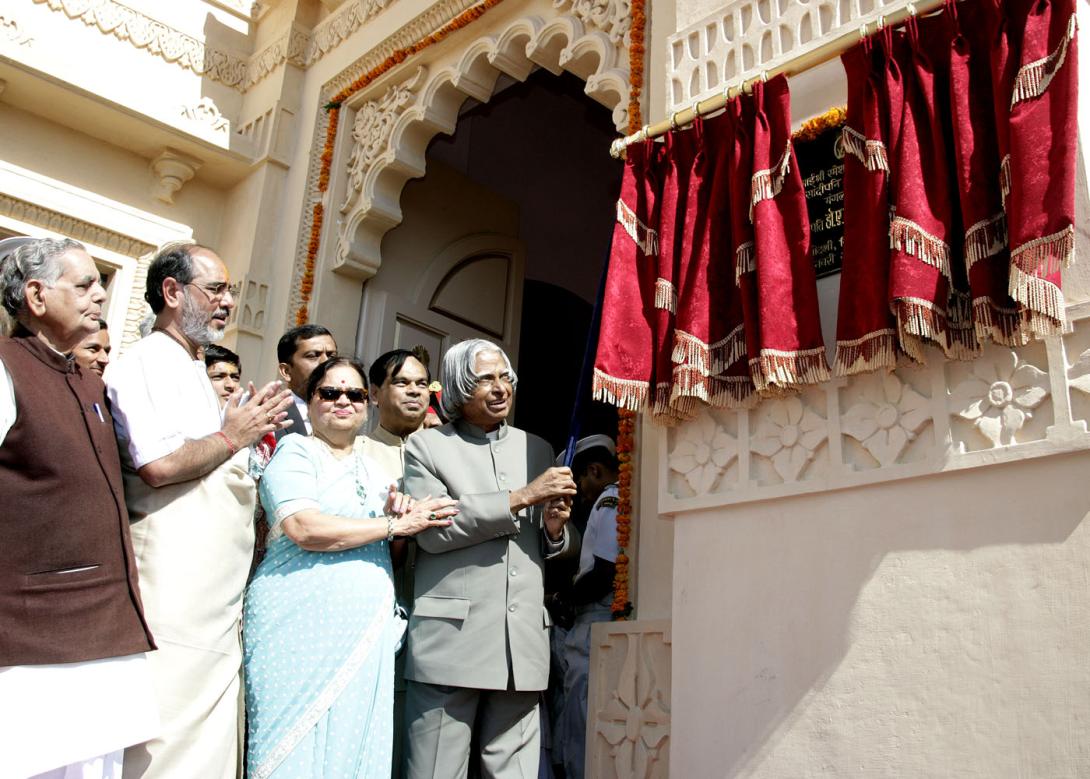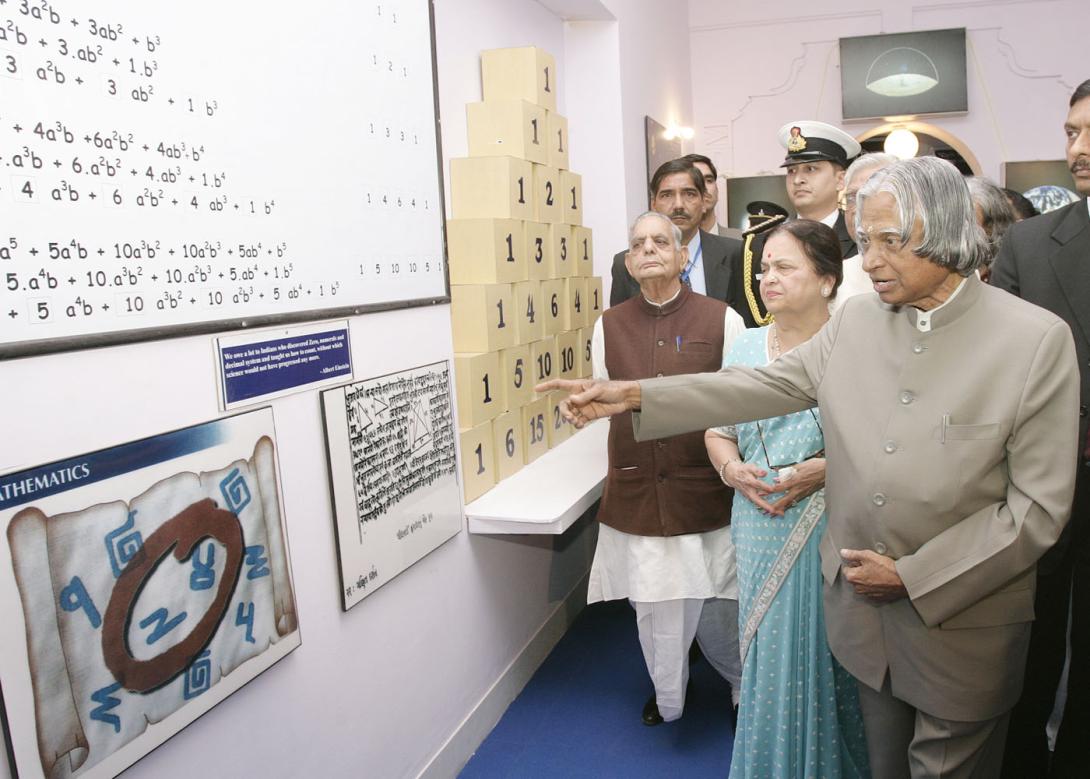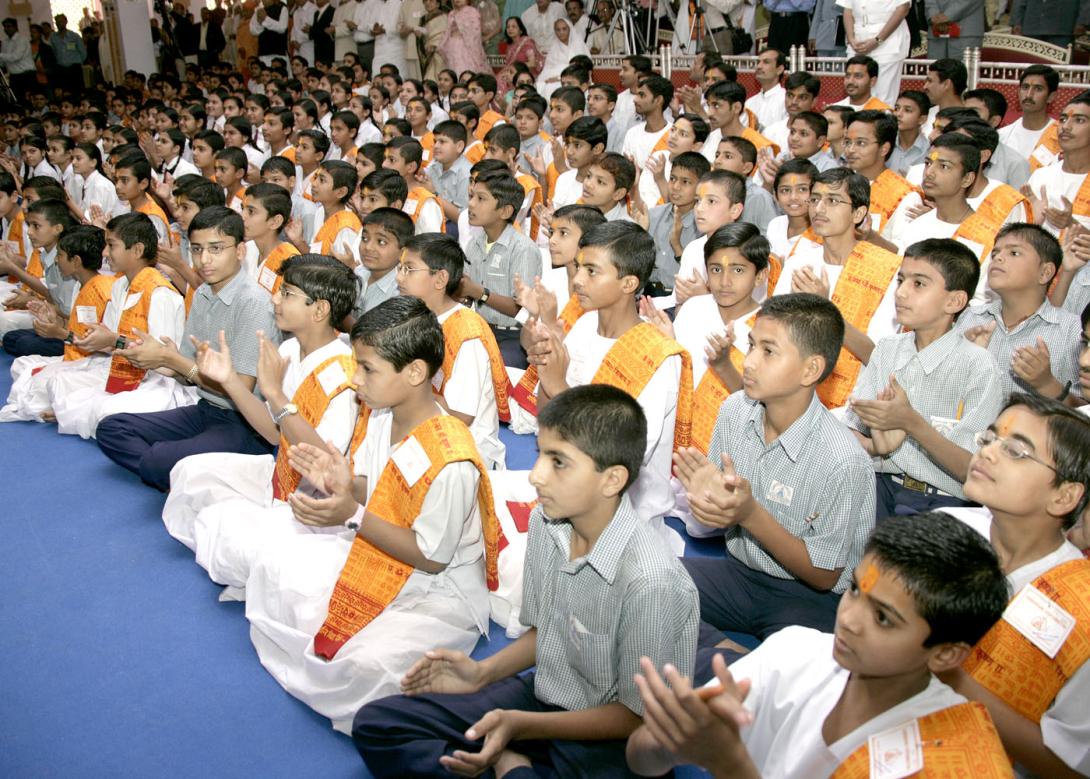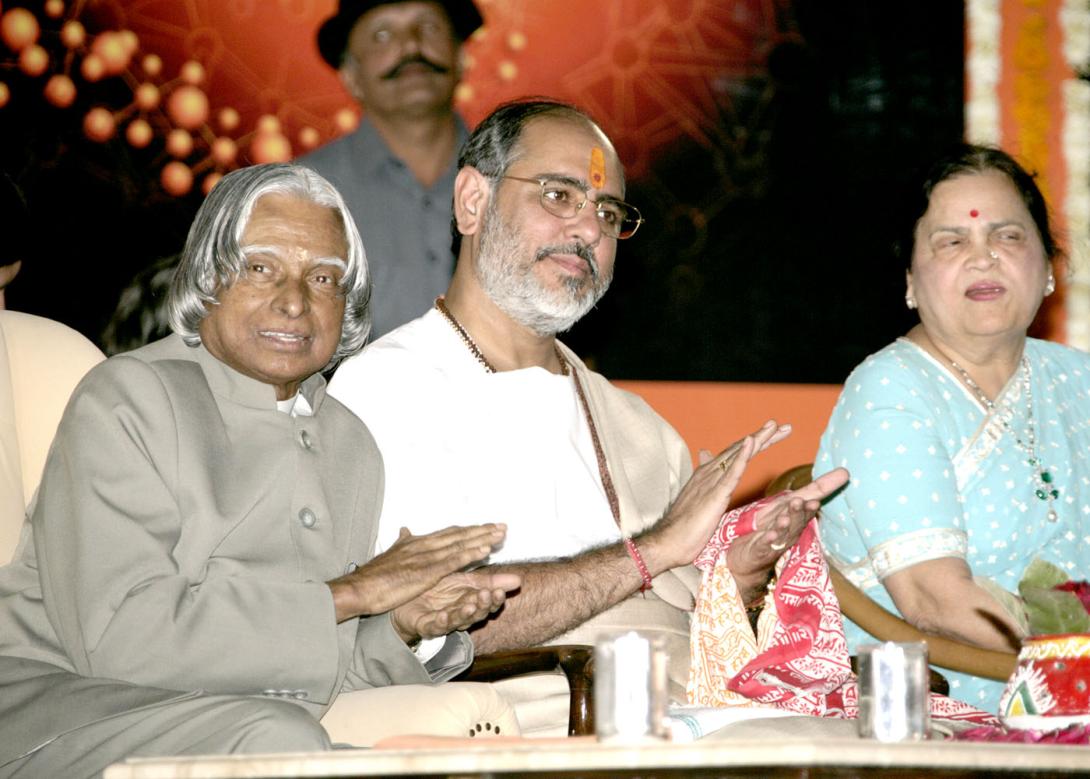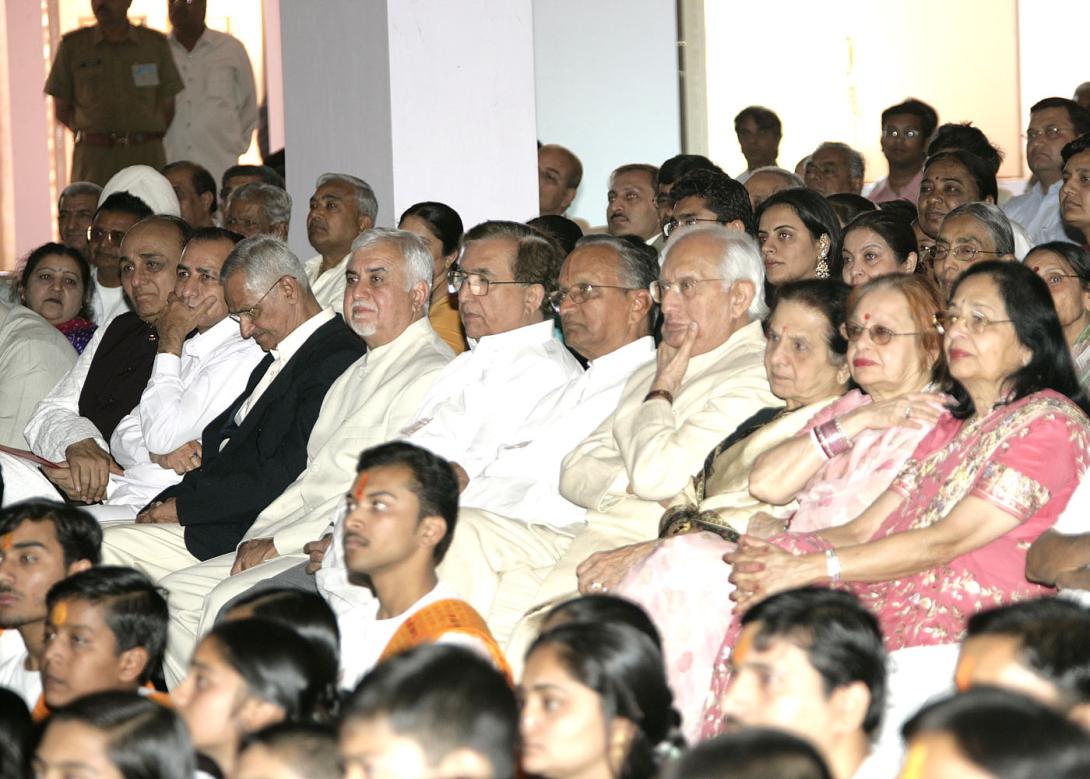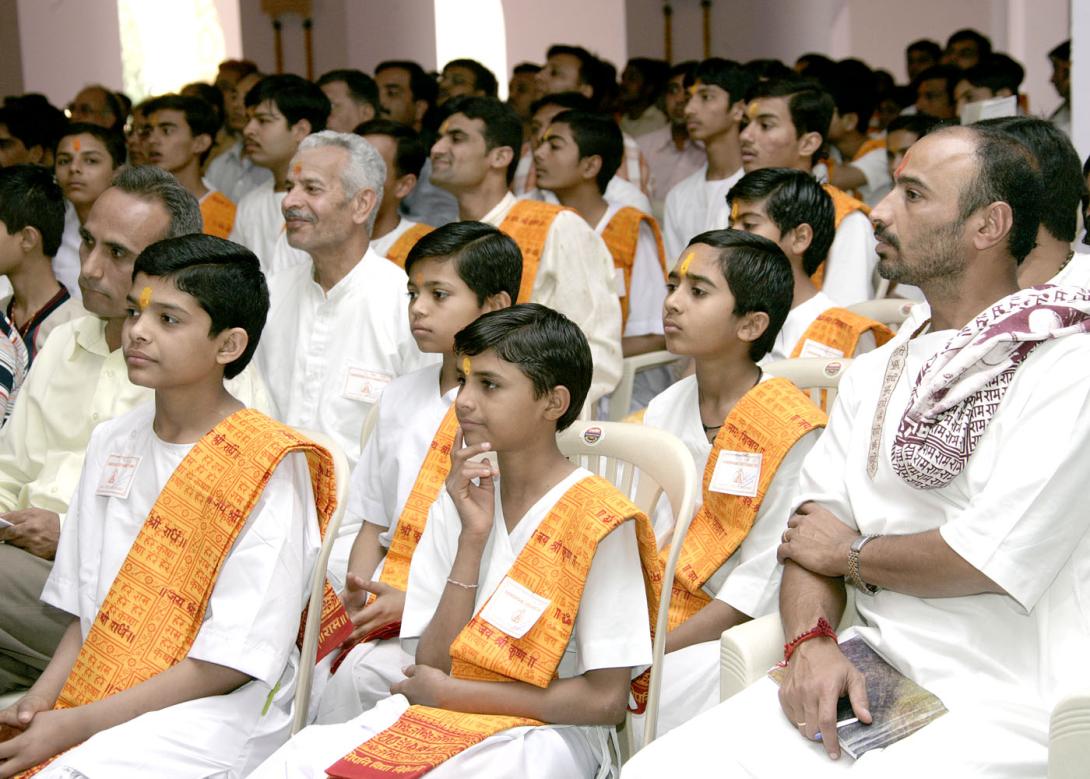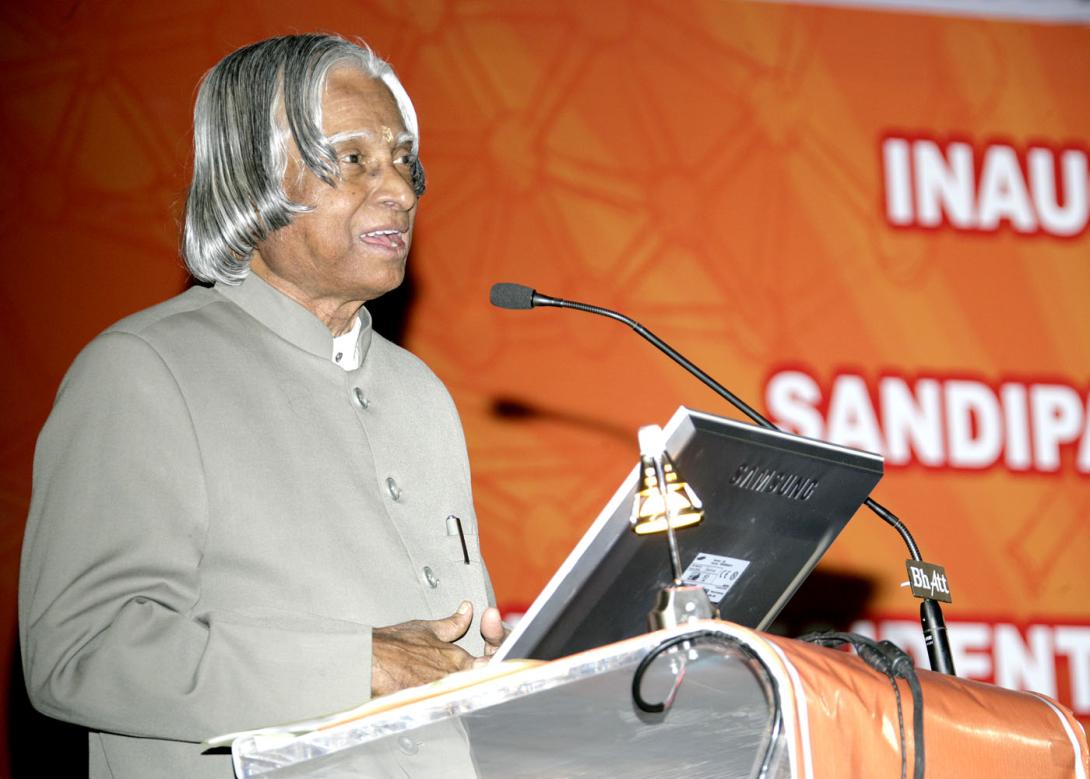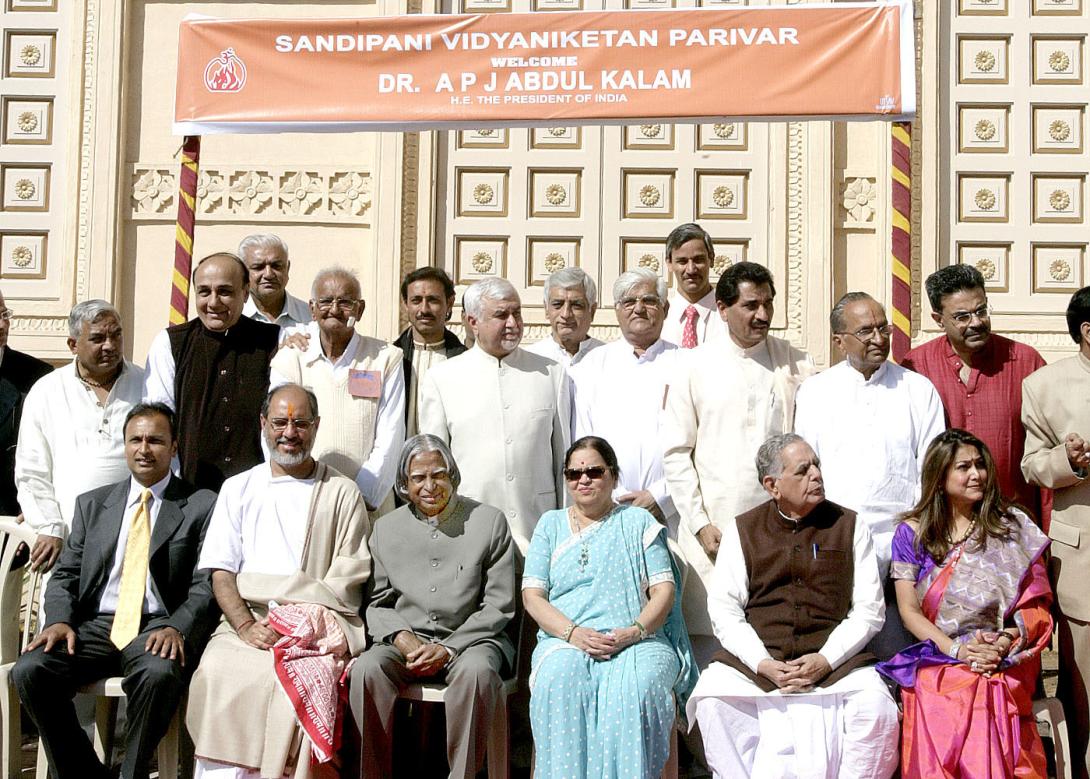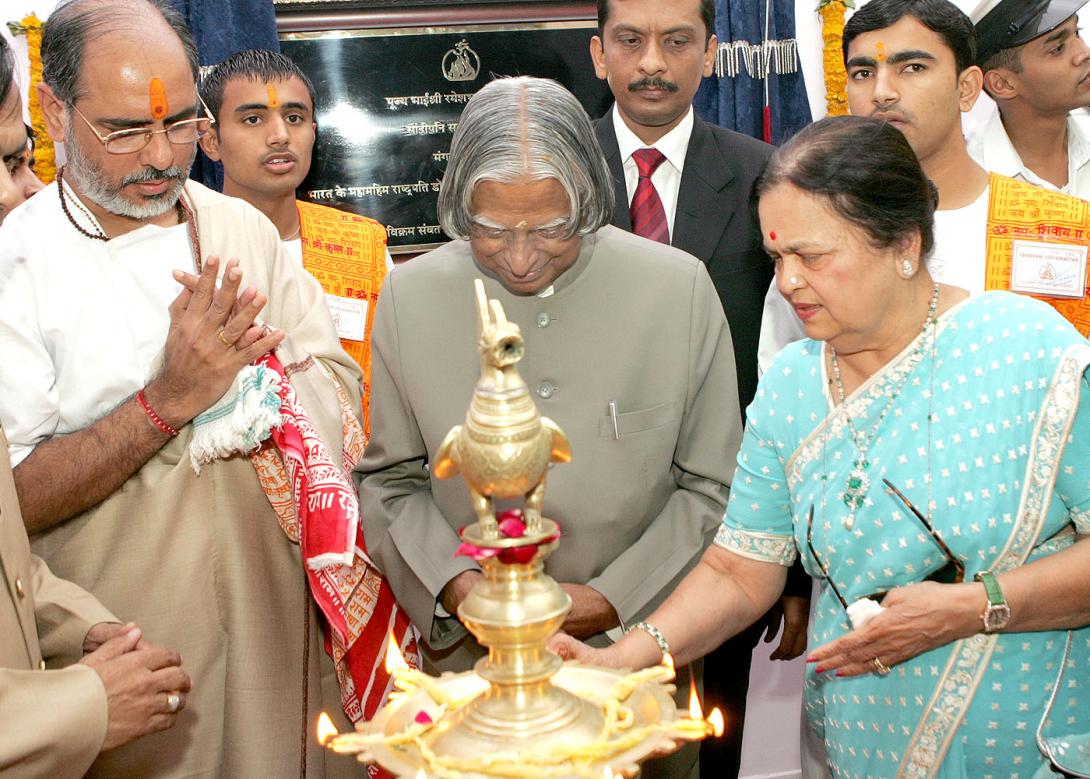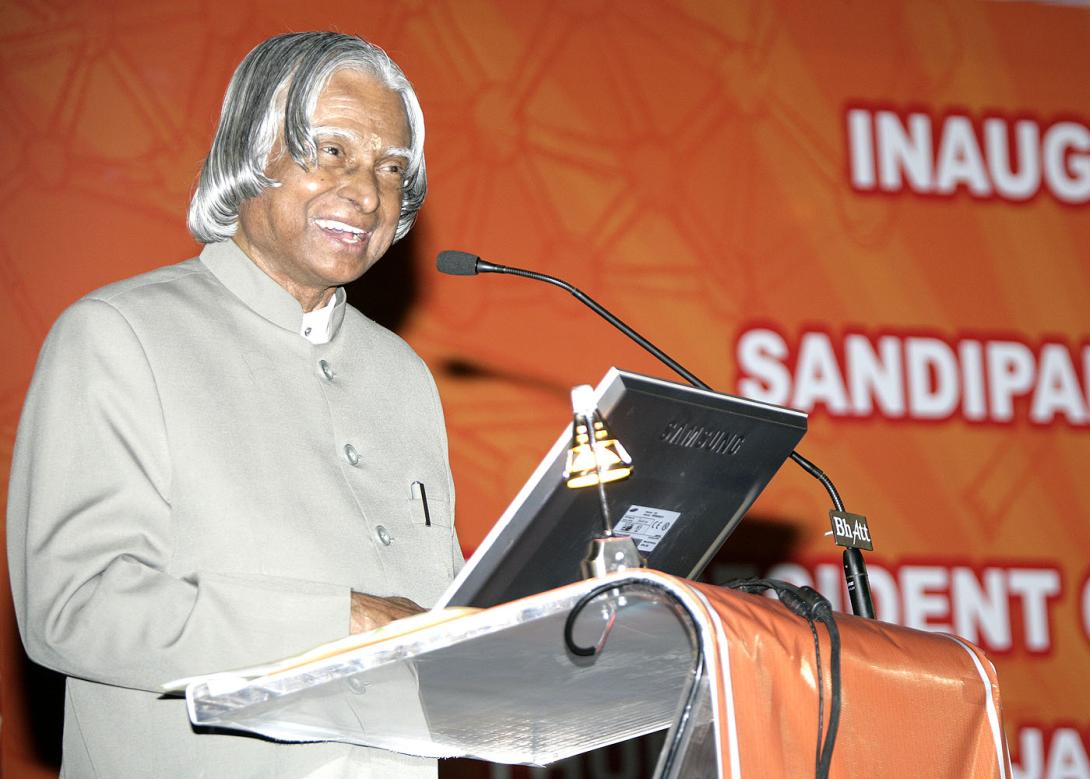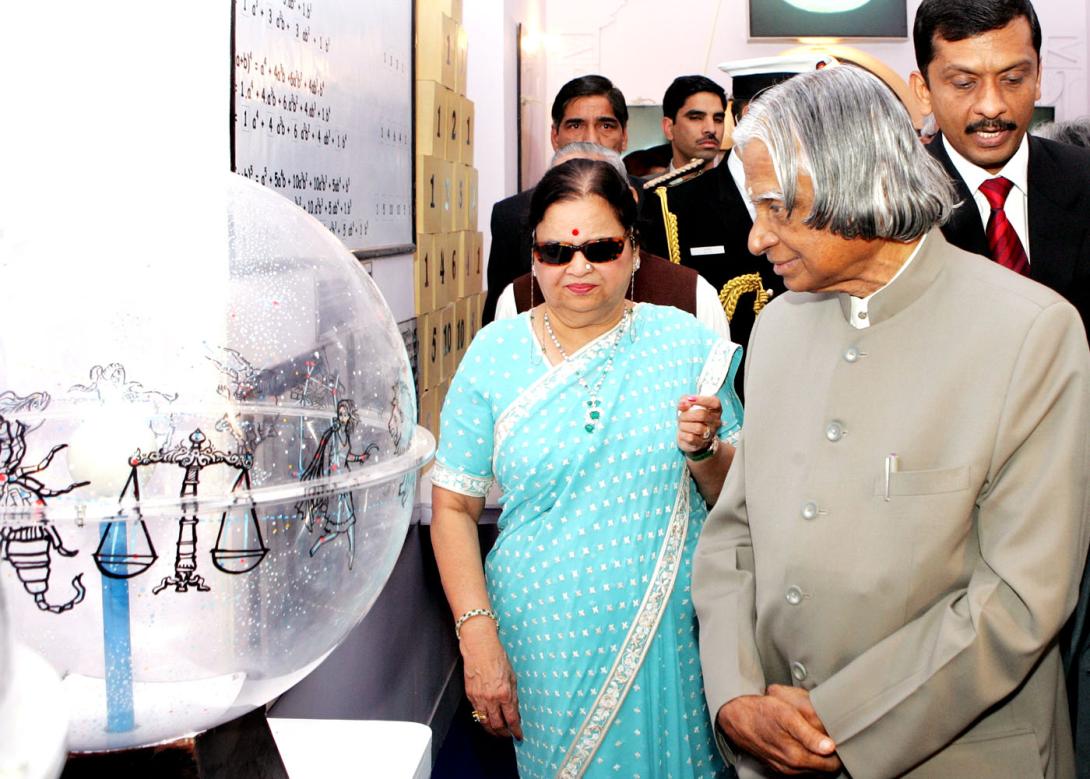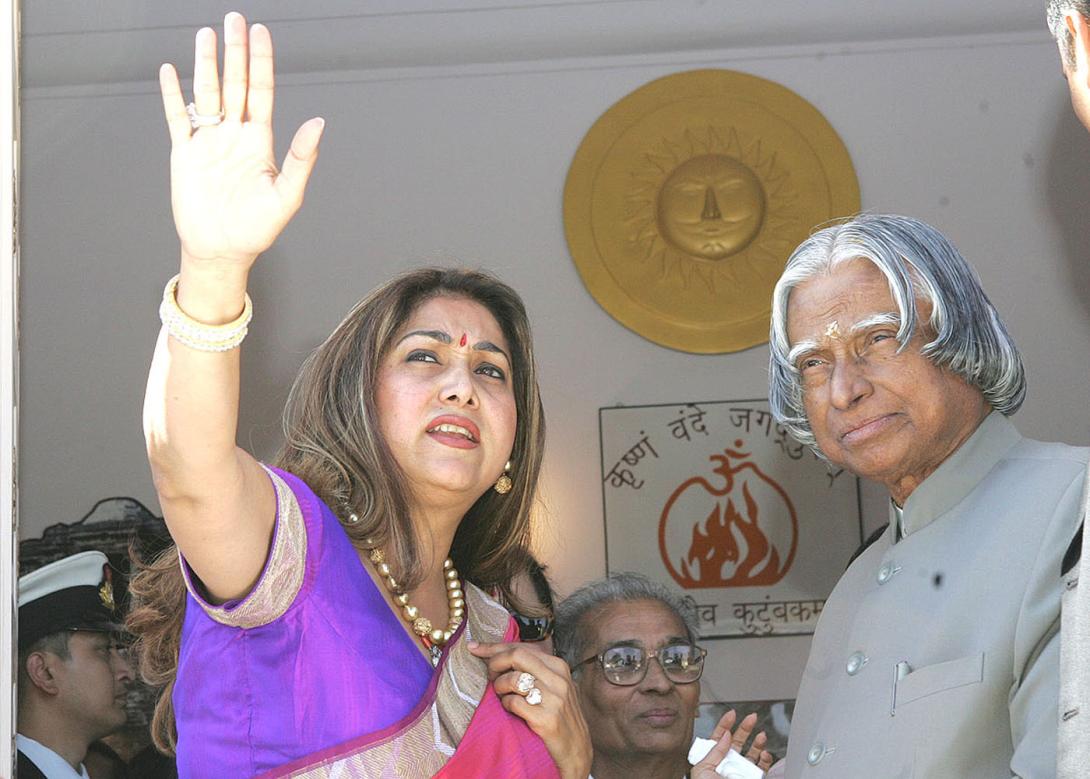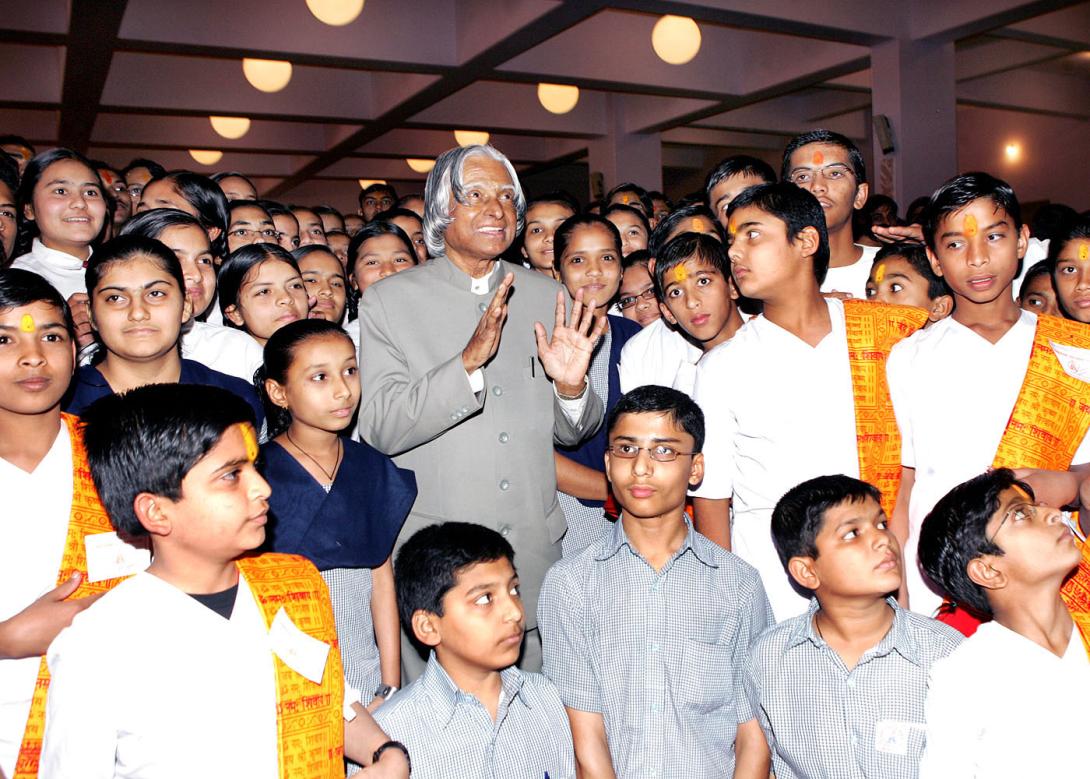Address At The Inauguration Of The Sandipani Science Gallery At Porbandar, Gujarat
Porbandar, Gujarat : 12-01-2006
A Great Mission : Sandipani Science Gallery
"Past meets the present
And creates the future"
I am delighted to participate in the inauguration of the Sandipani Science Gallery with the theme "Science in Ancient India" developed by the team presided over by Param Pujya Shri Rameshbhai Oza (Bhaishree). May I thank Srimathi Kokilaben Ambaniji for giving me an opportunity to visit Sandipani Vidhya Niketan. My greetings to the organizers, scientific community, teachers, students, staff, parents and distinguished invitees. I am happy to know that the science museum is highlighting some of the aspects of science covering mathematics, astronomy, metallurgy, medicine, ayurveda, chemistry, surgery and architecture of ancient India. While I am in this museum bringing out our ancient scientific achievements, particularly when I saw the presentation on Aryabhata, few thoughts came to my mind in relation to our ancient science. First, let me talk to you on the foundation for the scientific discovery.
Foundation for scientific discovery
Let me take our ancient great astronomers and mathematician.
Aryabhata's Aryabhatiyam: Aryabhata was both an astronomer and mathematician, born in 476 AD in Kusumapura (now called Patna). He was known to represent a summary of all maths at that point of time. Just when he was only 23 years old, he wrote his book ARYABHATIYAM in two parts. He covered important areas like arithmetic, algebra (first ever contributor), trigonometry and astronomy. He gave formulas for the areas of a triangle and a circle and attempted to give the volumes of a sphere and a pyramid. He was the first to give an approximation to ?pi? as the ratio of a circle?s circumference and diameter arriving at the value of 3.1416.
Bhaskara: Bhaskaracharya, as he was known, was another unique intellectual of his time. He was born in 1114 AD at Vijjalbada, located in either Karnataka or Maharashtra. He wrote the famous SIDDHANANTHASIROMANI in four chapters. He dealt in astronomy and algebra and is known to be the first recognised mathematician who evolved value to zero from the concept based on Aryabhatta?s discovery - the number.
Now I realize the great meaning of Albert Einstein's saying, 'We owe a lot to the Indians who taught us how to count, without, which no worthwhile scientific discovery could have been made'."
Ancient and modern science
The importance of our ancient science in multiple fields is hardly mentioned in the international science programme except the Indian contribution towards the numerals including zero. There are certain occasional references. The time has come, since the museum like "Santhipani Science Museum" established at Porbhandar, I would suggest a modern astronomy and modern mathematics has to interact with ancient astronomical science. In addition, modern astronomical science should be enriched, with our ancient science. There has to be a movement by our astronomers. When the earth dynamics in relation to our sun and our galaxy milky way, only three astronomers are referred: Copernicus, Galileo and Kepler. Aryabhatta, Brahmagupta and Baskara were never referred. For example, in India, the work on modern astronomy is progressed by many scientists in TIFR; Indian Institute of Astrophysics (IIA), Bangalore; Inter University Centre for Astronomy and Astrophysics (IUCAA), Pune. I would like to highlight certain scientific work done by Indian astronomical laboratories, so that we can find how we can blend the ancient astronomical scientific discoveries with the modern astronomical advancement, so that we may bring out our core competence in the field of Astronomy.
Binary millisecond pulsar: One of the important areas of application of radio science in India is the discovery of binary millisecond pulsar. A pulsar is the remnant of a star, which exploded, leaving behind a sphere made up of neutrons just 20 km in size but weighing more than the sun. The pulsar emits a beam of radio wave which is seen from the earth as a pulse every time it rotates. These waves are very weak, when they reach the earth. In order to detect the pulsar, one needs facilities like the Giant Meter Wave Radio Telescope (GMRT). The Tata Institute of Fundamental Research (TIFR) has built this largest Radio telescope in the world in rural area near the village of Khodad, 80 km from Pune. Because of the unique capabilities of our GMRT, scientists from all over the world, including USA and Canada, visit the centre to conduct collaborative experiments. Our scientists played a leading role in the recent discovery of a new "Binary millisecond pulsar". Discoveries like the one that has been made by the scientists of the National Centre for Radio Astrophysics of TIFR, is an important contribution for our radio science. Particularly the contribution made by Prof Govind Swarup in establishing the laboratory and conducting the scientific experiments is noteworthy.
Discovering the space: When I visited Prof. Jayant Narlikar?s laboratory in Pune, I found that the Galaxorial research undertaken by the institute is internationally competitive. One day it will provide answers to the questions regarding the birth of our planet and ?Are we alone in this universe?? He has attracted lot of young researchers from both India and abroad. The world's highest observatory for infrared studies is located in Digpa Ratsa Ri, Hanle, at an altitude of 4500 meters above sea level. Prof. Ramnath Cowshik has established this Henle observatory with a 2-m optical infrared telescope. This will help to study the galaxies and new stars. In addition, it enables continuous monitoring of Active Galactic Nuclei.
Modern Astronomy has to have a linkage with ancient astronomy and this fusion of thoughts may lead to new discoveries of astronomical science and mathematics. I would suggest the promoters of ancient science and astronomers from the three institutions of India and the institutions from other parts of the country and the world can come together, to study and enrich the capacities of Astronomy. I have discussed this thought with Prof. Govind Swarup. Srimathi Kokilaben Ambani can consider organizing an international conference on the fusion of ancient astronomy and modern astronomy in partnership astronomical laboratories of our country and abroad.
Now let me discuss with this gathering, our famous mathematician Srinivasa Ramanujan, who is famous for number theory. I would like to bring a relationship between the work of ancient scientists and the recent work of Srinivasa Ramanujan.
A genius ahead of time: Ramanujan
Ramanujan was born in 1887 in Tamil Nadu. At the age of 10, he entered the Town High School in Kumbakonam, where he first encountered formal mathematics. At 11, he had mastered the mathematical knowledge of advanced trigonometry using loaned books. His genius was beginning at the age of 14. Not only did he achieve merit certificates and academic awards throughout his school years, he was assisting the school in the logistics of assigning its 1200 students (each with their own needs) to its 35-odd teachers, completing exams in half the allotted time. His peers at the time later commented, "We, including teachers, rarely understood him," and "stood in respectful awe" of him. However, Ramanujan could not concentrate on other subjects and failed his high school exams.
His in-exhaustible spirit and love for his subject made him contribute to the treasure houses of mathematical research ? some of which are still under serious study and engaging all-available world mathematicians? efforts to establish formal proofs. Ramanujan was a unique Indian genius who could melt the heart of the most hardened and outstanding Cambridge mathematician Prof G H Hardy. In fact, it is not an exaggeration to say that it was Prof. Hardy who discovered Ramanujan for the world. Professor Hardy rated various geniuses on a scale of 100. While most of the mathematicians got a rating of around 30 with rare exceptions reaching to 60, Ramanujan got a rating of 100. Friends, the genius in Ramanujan had to be discovered by Prof. Hardy.
One of the tributes to Ramanujan says that, 'every Integer is a personal friend of Ramanujan'. For Ramanujan, numbers and their mathematical relationship were the measure of how the universe fits together. Each new theorem he explored was one more piece of the infinite to fathom.
In the area of analogue signal processing one uses a mathematical technique called Fourier Transform. When one enters the digital world a different tool called Discrete Fourier Transform is used. Whereas, if one has to analyse noise signals, engineers have recently come to the conclusion that an efficient mathematical tool would be the Ramanujan Fourier Transformation or in short RFT. This once again demonstrates that though Ramanujan did the work on RFT purely to satisfy his urge to explore the beauty of mathematics, it had come to be of use in day-to-applications like communications- almost six decades later. Ramanujan's work on number theory is a pioneering contribution to mathematical science.
His work was well-known through out the world, because he had been spotted and nurtured by a well-known mathematician and his work has spread. The message, which comes out, is the non-communication of ancient science is the cause of its non-recognition. Non-communication has happened because it has not been translated with analysis of concerned Indian scientists. The Sandipani Vidhya Niketan definitely can play a role in bridging the gap by bringing together ancient science and modern science. In addition, the research results of this fusion must be presented in the international scientific forums.
National Visionaries
Since I am in the birth place of Mahatma Gandhi, I realise Gujarat gave the nation leaders like Mahatma Gandhi who pioneered India's freedom movement and succeeded. Leaders like Sardar Vallabhai Patel is always remembered for his unique contribution to the freedom movement. When I am in the Sandipani Science Gallery, I would like to recall a pioneering work done in Space science by Prof Vikram Sarabhai, who was my guru.
Indian Space Visionary
Prof Vikram Sarabhai the youngest of the three and worked with Sri CV Raman in experimental cosmic ray. Prof Sarabhai established Physical Research Laboratory in Ahmedabad with Space research as focus. In later years he become the Director of Space S&T Centre. The SSTC (1963) started with launching sounding rockets for space atmospheric research. Prof. Vikram Sarabhai unfurled the space mission for India in 1970 that we should build Satellite Launch Vehicle capability, to put our communication satellites in the geo-synchronous orbit and remote sensing satellites in the polar orbit. Also, he envisaged that launch vehicles built in India should be launched from Indian soil. This one visionary thought led to intensive research in multiple fields of science and space technology. Many of us had the fortune to be part of Prof. Vikram Sarabhai's vision. Today, India with her 20,000 scientific, technological and support staff in multiple space research centres, supported by about 300 industries and academic institutions, has the capability to build any type of satellite launch vehicle to place remote sensing, communication and meteorology satellites in different orbits and space application has become part of our daily life. Prof Vikram Sarabhai's space vision is highlighted to bring out a vision with a purpose always succeeds. I am sure, Sandipani Science Gallery will achieve many missions especially inspiring youth to take up scientific research.
Conclusion
Science is a fascinating subject. Mastery in science needs understanding of mathematics. Mathematics in combination with science shines. What is needed is confronting theory with experimentation. For enabling the student to capture the thought, the student should be motivated to visualize and imagine the phenomenon as done by our ancient literature. Learning science needs freedom to think and freedom to imagine. Both have to be provided by our education system and our Teachers can draw number of lessons from the Indian civilizational heritage. They have to ask questions which are challenging and allow the student to think and come up with innovative answers.
I inaugurate the Science Museum and my best wishes to all the participants in their mission of bringing out the glory of our ancient scientists and mathematicians which will enhance the self esteem of our youth and motivate them to invent and discover new areas in science.
May God bless you.

